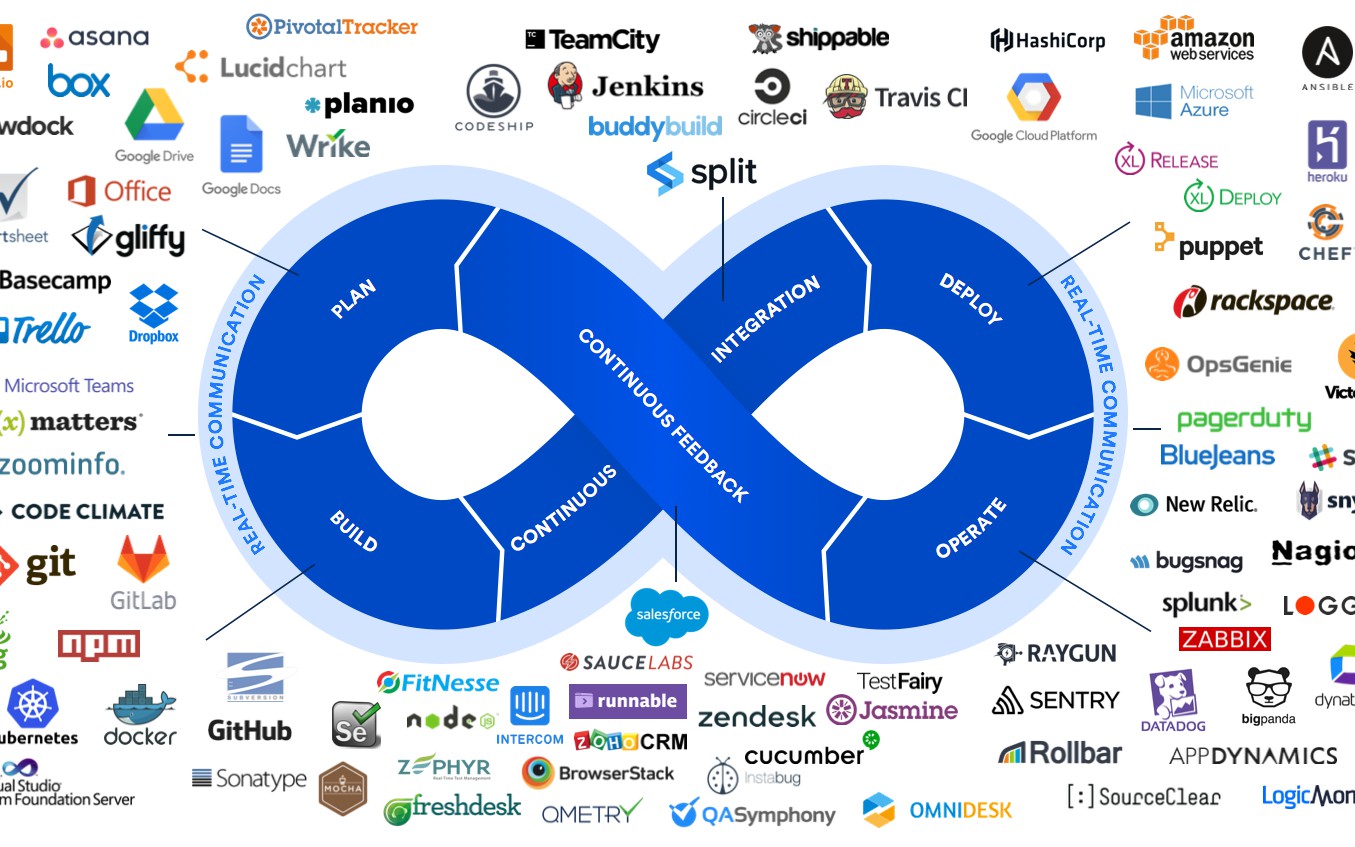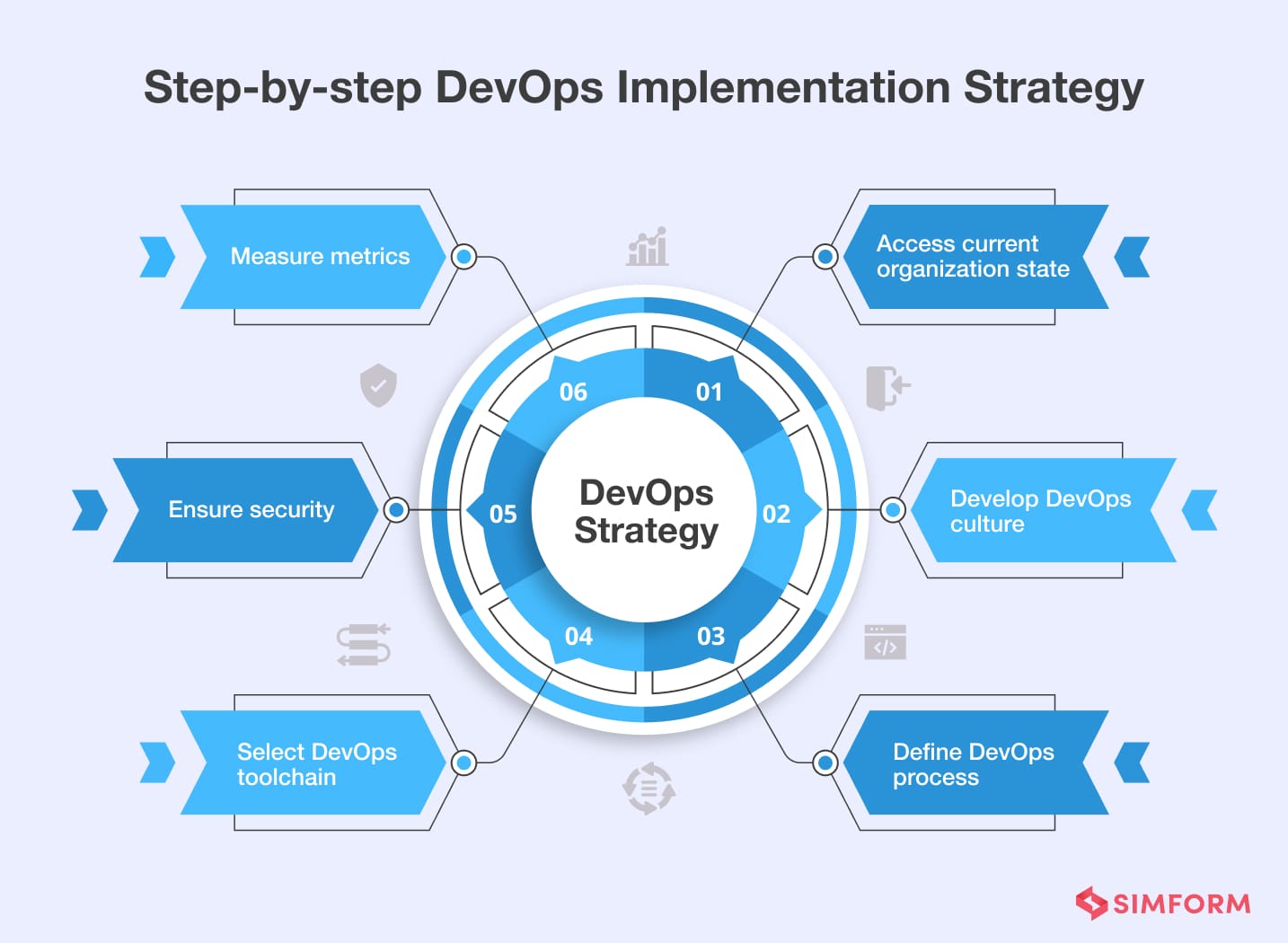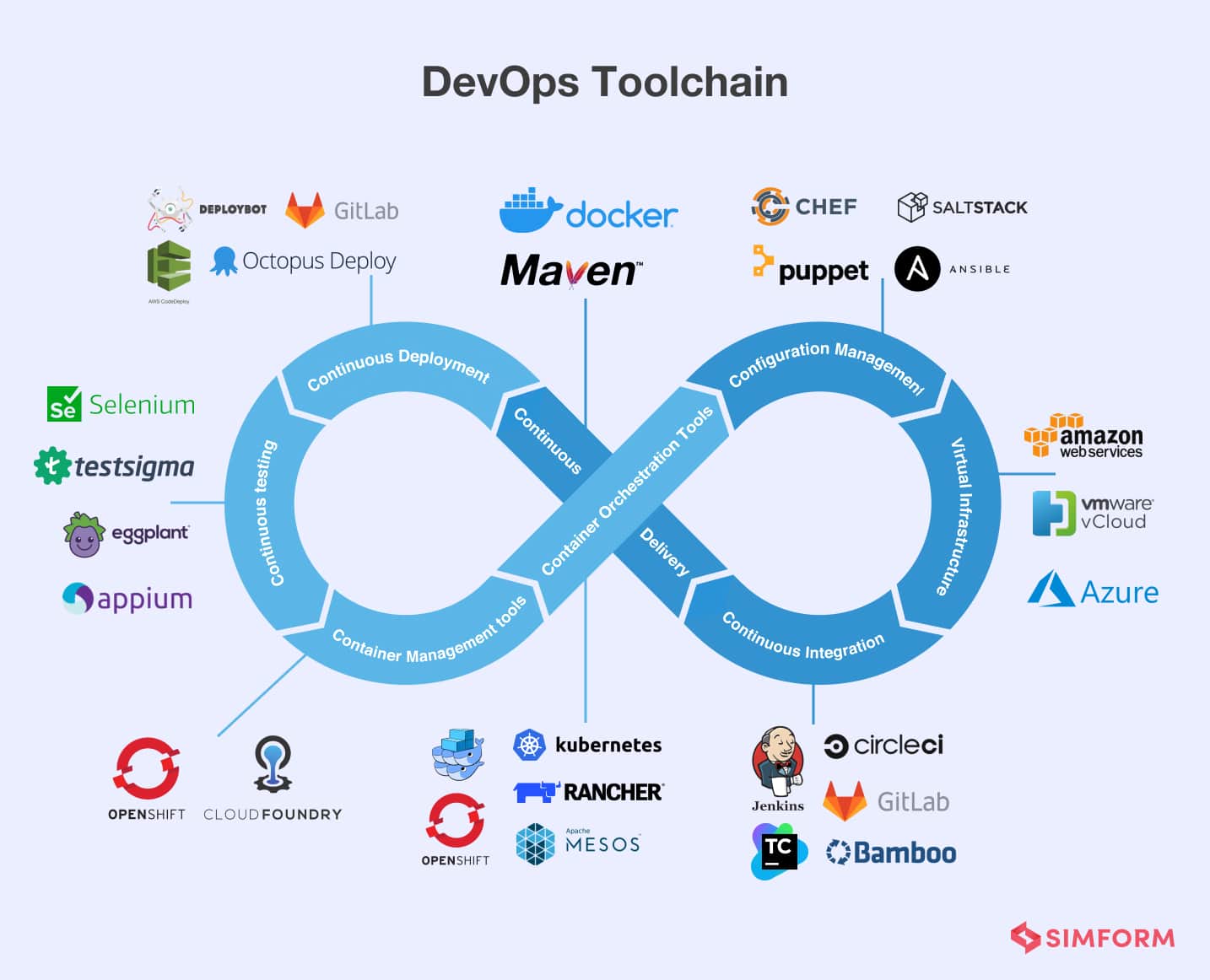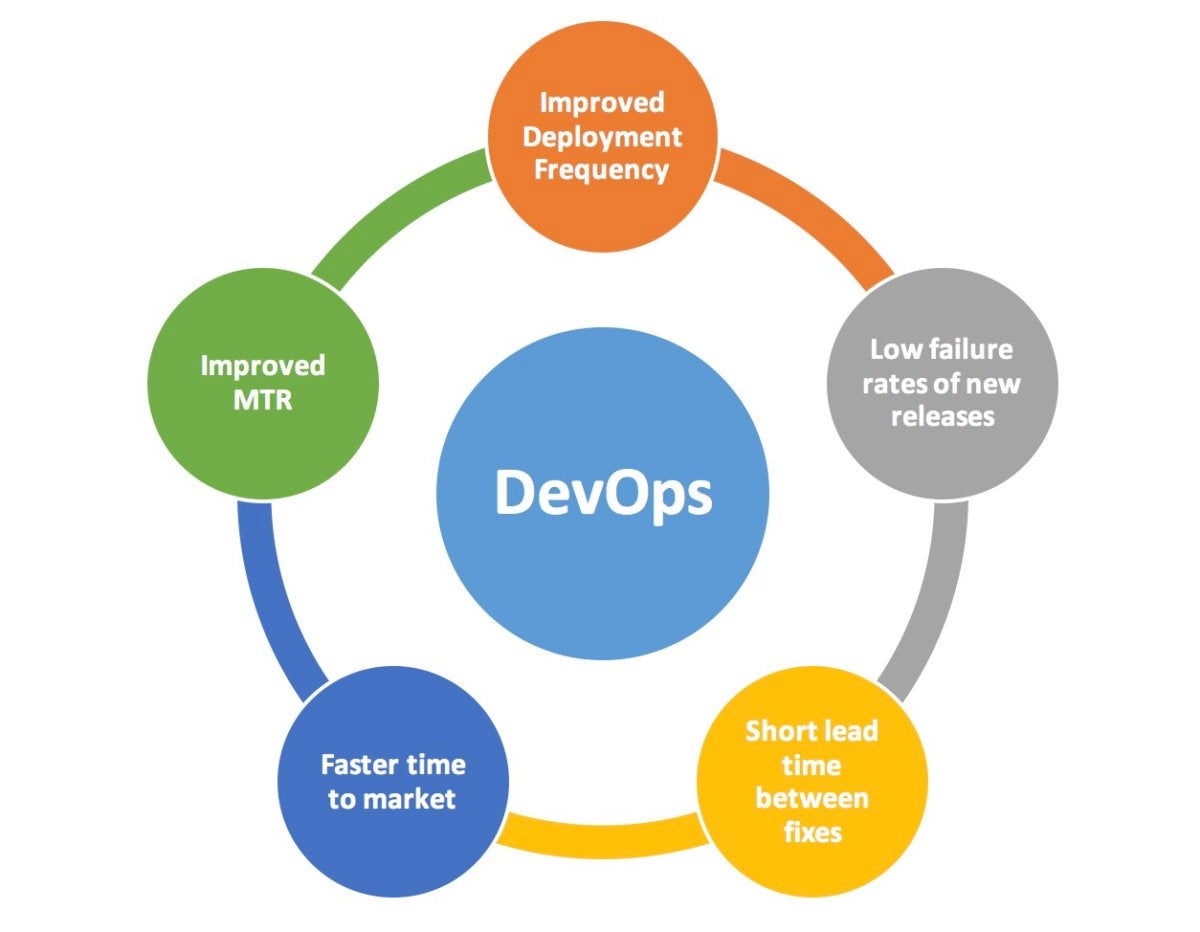Understanding DevOps Tooling: A Critical Component in Modern IT Operations
DevOps tooling plays a pivotal role in modern IT operations, enabling organizations to streamline workflows, foster collaboration, and enhance overall efficiency. By automating various stages of the software development lifecycle (SDLC), DevOps tooling helps teams deliver high-quality software products faster and more reliably. This article explores the concept of DevOps tooling and its significance in today’s fast-paced, technology-driven world.
DevOps tooling refers to the collection of software applications and tools that aid in the collaboration and communication between development and operations teams. These tools support the DevOps culture, which emphasizes agility, automation, and continuous improvement. By adopting DevOps tooling, organizations can break down silos, reduce manual errors, and accelerate the delivery of software updates and features.
In the context of DevOps, tooling encompasses a wide range of categories, including continuous integration (CI), continuous delivery (CD), containerization, and monitoring. These categories support the entire SDLC, from code development and testing to deployment and maintenance. A well-rounded DevOps toolchain, therefore, is essential for organizations seeking to optimize their IT operations and gain a competitive edge.
As DevOps tooling continues to evolve, it is crucial for organizations to stay informed about the latest developments and best practices. By adopting the right tools and strategies, teams can improve their collaboration, streamline their workflows, and ultimately, deliver better software products to their customers.
Key Categories of DevOps Tooling: A Holistic Approach
DevOps tooling comprises various categories that support the entire software development lifecycle (SDLC). Adopting a well-rounded toolchain is essential for organizations seeking to optimize their IT operations and gain a competitive edge. This section discusses the primary categories of DevOps tooling and their significance in modern IT operations.
Continuous Integration (CI) and Continuous Delivery (CD)
CI/CD tools automate the process of integrating code changes from multiple developers and delivering the software to the production environment. These tools help teams identify and resolve integration issues early in the SDLC, ensuring a smooth and efficient development process. Popular CI/CD tools include Jenkins, GitLab CI/CD, and CircleCI.
Containerization
Containerization tools, such as Docker and Kubernetes, enable the creation, deployment, and management of lightweight, portable application containers. Containerization helps teams streamline their development and deployment processes, ensuring consistency across different environments and reducing the risk of compatibility issues.
Monitoring and Logging
Monitoring and logging tools provide real-time insights into the performance and health of applications and infrastructure. These tools help teams identify and troubleshoot issues quickly, ensuring optimal performance and reliability. Popular monitoring and logging tools include Prometheus, Grafana, and ELK Stack (Elasticsearch, Logstash, and Kibana).
Infrastructure as Code (IaC)
IaC tools allow teams to manage and provision infrastructure using code, promoting consistency, reusability, and automation. IaC tools, such as Terraform and Ansible, help teams streamline their infrastructure management processes, reducing the risk of manual errors and ensuring a more efficient and agile IT operations.
Version Control Systems (VCS)
VCS tools, such as Git, enable teams to track and manage changes to their codebase, promoting collaboration and ensuring a transparent and auditable development process. VCS tools help teams maintain a single source of truth for their code, reducing the risk of conflicts and ensuring a more efficient development process.
By adopting a well-rounded DevOps toolchain, organizations can streamline their workflows, foster collaboration, and enhance overall efficiency. Understanding the key categories of DevOps tooling is the first step in building a robust and effective DevOps strategy.
Selecting the Right DevOps Tools: A Balancing Act
Choosing the most suitable DevOps tools for your organization involves striking a balance between various factors, such as organizational requirements, team preferences, and budget constraints. This section outlines the process of selecting the right DevOps tools and highlights some popular options in the market.
Identifying Organizational Requirements
Begin by assessing your organization’s unique needs and objectives. Consider factors like the size and structure of your team, the complexity of your projects, and the specific challenges you aim to address through DevOps tooling. Align your DevOps strategy with your overall business goals and ensure that your chosen tools support your organization’s long-term growth and success.
Engaging Your Team
Involve your team in the decision-making process, as their preferences and feedback can significantly impact the success of your DevOps tooling adoption. Encourage open communication, solicit input from various stakeholders, and foster a culture of collaboration and continuous learning. By empowering your team, you can ensure a smoother transition and higher adoption rates.
Assessing Budget Constraints
DevOps tooling can vary significantly in cost, from open-source solutions to commercial offerings. Establish a realistic budget and evaluate your options accordingly. Keep in mind that the most expensive tools are not always the best fit for your organization, and that open-source solutions can offer comparable functionality and flexibility.
Popular DevOps Tools
Some popular DevOps tools include Jenkins for continuous integration, GitLab CI/CD for continuous integration and delivery, Docker for containerization, and Kubernetes for container orchestration. Familiarize yourself with these tools and assess their features, benefits, and limitations in the context of your organization’s unique needs and objectives.
Selecting the right DevOps tools is a critical step in building a successful DevOps strategy. By considering factors like organizational requirements, team preferences, and budget constraints, you can ensure a well-informed decision that supports your organization’s long-term growth and success.
How to Implement DevOps Tooling: A Step-by-Step Guide
Implementing DevOps tooling requires careful planning, execution, and maintenance. This section outlines a detailed, actionable guide to help you successfully implement DevOps tooling in your organization. By following these steps, you can ensure a smooth transition and maximize the benefits of your DevOps strategy.
Step 1: Define Your DevOps Strategy
Begin by outlining your DevOps objectives, identifying the key categories of DevOps tooling required to support your software development lifecycle, and establishing a roadmap for implementation. Ensure that your DevOps strategy aligns with your organization’s overall business goals and IT objectives.
Step 2: Select the Right Tools
Choose DevOps tools that cater to your organization’s unique needs and objectives, considering factors like organizational requirements, team preferences, and budget constraints. Popular tools include Jenkins for continuous integration, GitLab CI/CD for continuous integration and delivery, Docker for containerization, and Kubernetes for container orchestration.
Step 3: Integrate Tools into Your Workflow
Integrate your chosen DevOps tools into your existing workflow, ensuring a seamless transition and minimal disruption to your development and operations processes. Leverage APIs, webhooks, and other integration techniques to connect your tools and automate your workflows.
Step 4: Configure Tools for Optimal Performance
Configure your DevOps tools to optimize their performance and ensure that they meet your organization’s unique requirements. Establish best practices for configuration management, such as version control, documentation, and regular reviews, to maintain a consistent and efficient toolchain.
Step 5: Maintain Tools and Workflows
Regularly maintain your DevOps tools and workflows, addressing any issues, updating configurations, and implementing new features as required. Establish a culture of continuous learning and improvement, encouraging your team to stay informed about the latest DevOps trends and best practices.
Implementing DevOps tooling can significantly enhance your organization’s workflows, collaboration, and efficiency. By following this step-by-step guide, you can ensure a successful implementation and maximize the benefits of your DevOps strategy.
Overcoming Challenges in DevOps Tooling Adoption: A Proactive Strategy
Implementing DevOps tooling can present various challenges, such as resistance to change, lack of expertise, and tool compatibility issues. To ensure a smooth transition, it’s essential to proactively address these challenges and develop strategies to overcome them. This section outlines common obstacles in DevOps tooling adoption and offers practical solutions to help you navigate these challenges successfully.
Resistance to Change
Resistance to change is a common challenge in DevOps tooling adoption. To address this issue, involve your team in the decision-making process, solicit their feedback, and provide training and support throughout the implementation process. Emphasize the benefits of DevOps tooling, such as increased efficiency, streamlined workflows, and enhanced collaboration, to help your team understand the value of adopting new tools and processes.
Lack of Expertise
Lack of expertise in DevOps tooling can hinder successful adoption. To overcome this challenge, invest in training and development programs for your team, encouraging them to learn about new tools and best practices. Leverage online resources, such as documentation, tutorials, and community forums, to supplement your team’s learning and provide ongoing support as they adapt to new tools and processes.
Tool Compatibility Issues
Tool compatibility issues can arise when integrating new DevOps tools into your existing workflow. To address this challenge, carefully evaluate your chosen tools for compatibility, ensuring that they can integrate seamlessly with your existing infrastructure. Leverage APIs, webhooks, and other integration techniques to connect your tools and automate your workflows, and be prepared to make adjustments as needed to ensure a smooth transition.
By proactively addressing common challenges in DevOps tooling adoption, you can ensure a smoother transition and maximize the benefits of your DevOps strategy. Encourage open communication, invest in training and development, and carefully evaluate tool compatibility to overcome obstacles and ensure a successful implementation.
Measuring the Impact of DevOps Tooling: A Data-Driven Approach
Measuring the effectiveness of DevOps tooling is crucial for continuous improvement and long-term success. By tracking key performance indicators (KPIs) and metrics, organizations can evaluate the impact of their DevOps strategies, identify areas for improvement, and make data-driven decisions. This section discusses various metrics and KPIs for evaluating the effectiveness of DevOps tooling, emphasizing the importance of a data-driven approach to decision-making.
Deployment Frequency
Deployment frequency measures the number of deployments in a given timeframe, such as daily, weekly, or monthly. By tracking deployment frequency, organizations can assess the efficiency of their release processes and identify opportunities for automation and streamlining.
Lead Time
Lead time refers to the time it takes for a change to move from commit to production. By monitoring lead time, organizations can evaluate the efficiency of their development and operations processes, identify bottlenecks, and optimize workflows for faster delivery.
Mean Time to Recovery (MTTR)
MTTR measures the average time it takes to recover from a failure or incident. By tracking MTTR, organizations can assess their ability to respond to and resolve issues quickly, ensuring minimal disruption to their services and customers.
Change Failure Rate
Change failure rate measures the percentage of changes that result in incidents or failures. By monitoring change failure rate, organizations can evaluate the quality of their development and operations processes, identify areas for improvement, and implement strategies to reduce the risk of failures.
Implementing a data-driven approach to DevOps tooling evaluation is essential for continuous improvement and long-term success. By tracking metrics such as deployment frequency, lead time, MTTR, and change failure rate, organizations can make informed decisions, optimize their workflows, and maximize the benefits of their DevOps strategies.
The Future of DevOps Tooling: Emerging Trends and Innovations
The DevOps landscape is constantly evolving, with new trends and innovations shaping the way organizations manage their IT operations and workflows. By staying informed about the latest advancements in DevOps tooling, teams can continuously refine their strategies, improve efficiency, and maintain a competitive edge. This section explores emerging trends and innovations in DevOps tooling, discussing their potential impact on IT operations and workflow management.
AI-Driven Automation
Artificial intelligence (AI) and machine learning (ML) are increasingly being integrated into DevOps tooling, enabling automation of complex tasks and processes. AI-driven automation can help teams identify patterns, predict issues, and optimize workflows, ultimately leading to faster delivery times, reduced costs, and improved quality.
Infrastructure as Code (IaC)
IaC is an approach to managing infrastructure through machine-readable definition files, rather than through manual processes. By adopting IaC, teams can automate infrastructure provisioning, configuration, and management, ensuring consistency, reducing errors, and improving scalability.
Serverless Architectures
Serverless architectures enable teams to build and run applications without the need to manage servers, allowing them to focus on developing features and delivering value to their customers. By adopting serverless architectures, teams can reduce operational overhead, improve scalability, and accelerate time-to-market.
Staying informed about emerging trends and innovations in DevOps tooling is essential for long-term success. By embracing AI-driven automation, IaC, and serverless architectures, teams can optimize their workflows, improve efficiency, and maintain a competitive edge in today’s rapidly evolving IT landscape.
DevOps Tooling Best Practices: A Summary
Adopting DevOps tooling can significantly improve IT operations, streamline workflows, and promote collaboration. However, to fully realize the benefits of DevOps tooling, teams must follow best practices in adoption, implementation, and management. This section summarizes the key takeaways from this comprehensive guide, emphasizing best practices in DevOps tooling.
Understanding DevOps Tooling Categories
To support the entire software development lifecycle, teams should consider a well-rounded toolchain that includes continuous integration (CI), continuous delivery (CD), containerization, and monitoring tools. By understanding the different categories of DevOps tooling, teams can ensure they have the necessary tools to streamline their workflows and improve efficiency.
Selecting the Right DevOps Tools
When choosing DevOps tools, teams should consider factors like organizational requirements, team preferences, and budget constraints. Popular tools such as Jenkins, GitLab CI/CD, Docker, and Kubernetes can be suitable options, but teams should also evaluate other tools to find the best fit for their specific needs.
Implementing DevOps Tooling
Implementing DevOps tooling requires careful planning and execution. Teams should follow a step-by-step guide that covers aspects like tool selection, integration, configuration, and maintenance. Real-life examples and best practices can help ensure a successful implementation.
Overcoming Challenges in DevOps Tooling Adoption
Teams may face common obstacles in DevOps tooling adoption, such as resistance to change, lack of expertise, and tool compatibility issues. By proactively addressing these challenges with practical solutions and strategies, teams can ensure a smooth transition to DevOps tooling.
Measuring the Impact of DevOps Tooling
To evaluate the effectiveness of DevOps tooling, teams should track metrics and key performance indicators (KPIs) such as deployment frequency, lead time, and mean time to recovery. A data-driven approach to decision-making can help teams continuously improve and optimize their DevOps strategies.
Staying Informed about DevOps Tooling Trends
The DevOps landscape is constantly evolving, with new trends and innovations shaping the way organizations manage their IT operations and workflows. Teams should stay informed about emerging trends and innovations in DevOps tooling, such as AI-driven automation, infrastructure as code (IaC), and serverless architectures, to continuously refine their strategies and maintain a competitive edge.
By following these best practices, teams can successfully adopt, implement, and manage DevOps tooling, ultimately improving efficiency, promoting collaboration, and enhancing IT operations.







